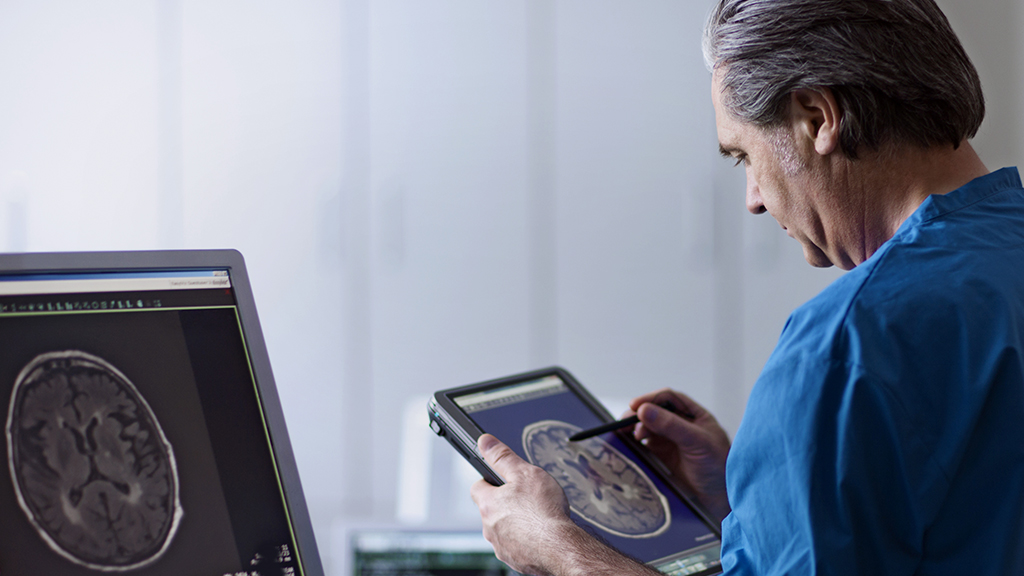Long patient waiting times for diagnostic tests is a problem in many parts of the world. The NHS in England, like numerous health systems, grappled with escalated demands amidst the pandemic, and are striving to balance safety, high-quality care, and the mounting patient needs.
At Imperial College Healthcare NHS Trust’s renowned St Mary’s Hospital in northwest London, Professor Wladyslaw Gedroyc and lead radiographer David Tao are amongst the first in London to complete the upgrades of their GE HealthCare MRI scanners with AIR Recon DL, enabling them to both speed up exams and improve image quality. Two months in, they are already able to scan two more patients a day, which is improving patient experience and helping bring down waiting times.
“After having worked with our upgraded machine for a couple of months, we feel that it allows us to get the best of both worlds. On the one hand we get a substantial improvement in quality, on the other hand we are also able to obtain a substantial improvement in productivity. These are really unheard-of benefits, not only in MRI but even in medicine in general where you very rarely get the best of both worlds,” says Professor Gedroyc, Consultant Radiologist at Imperial College Healthcare NHS Trust and who works at St Mary’s Hospital.
In short, the AIR Recon DL upgrades include a pioneering deep-learning-based reconstruction algorithm that enables radiologists to achieve scan results faster without compromising the image quality. By removing noise and ringing from raw images, scans are consistently crisp. An improved signal-to-noise ratio (SNR) means that scan times can be shortened while also smoothing the workflow and enhancing the patient experiences in general.
High quality images from well-seasoned machines
“To be quite honest, we have been positively surprised to see the kind of image quality we are now able get out of a ten-year-old MRI scanner. The improvement is significant and so instead of having to think about buying new scanners, we are now able to take these machines forward into the mid-term future without having to compromise on the image quality. It makes a lot of sense,” says Professor Gedroyc.
In the initial months following the upgrade, Professor Gedroyc has seen significant improvement in the quality of many of his core MR examinations, such as when scanning for signs in cancer like cholangiocarcinoma, he is seeing an improved level of diagnostic accuracy.
The need for increased productivity
Located in Paddington, St Mary’s Hospital is a leading education, teaching and research hospital for northwest London and runs one of the city’s four major trauma centres along with a 24-hour accident and emergency department. As is the case in many other hospitals, St Mary’s is faced with an overall increase in demand as well as post-pandemic backlog challenges that call for an increase in productivity.
“We are starting to see a noticeable increase in productivity even though we have not yet gone to the extremes of the benefits that we can get from the AIR Recon DL upgrade. Two months in, we are now scanning two more patients a day. Previously a typical scan took about 30 minutes, now we are down to about 20 minutes and at the same time the need for repeated sequences has gone down. This is good news for the many patients that do not like to be placed in a MRI scanner, and also for us operating the machine. It all helps,” says radiographer David Tao.
“One must remember that productivity is not just about pushing patients through the machine, but also about how we are getting the quality that we need. Finding and keeping an optimal balance between productivity versus image quality is what we are looking for and what will ultimately ensure the best overall productivity,” Tao adds.
Better prepared for the unexpected
One unexpected benefit of being able to produce quality images faster is that working at the MR clinic has become less stressful according to Professor Gedroyc. “It is very user-friendly. I will not go as far as to say that it is a plug-and-play, but it’s close.”
“This also impacts the daily routines in our clinic in a very positive way. In a place like ours, we always must be prepared for the unexpected, meaning that we always get situations where we must squeeze patients into our schedule. In such a workflow, it means a lot to know that the technology gives you a greater latitude, that an emergency in the morning does not necessarily mean that you will be running behind schedule all day,” says Professor Gedroyc.





